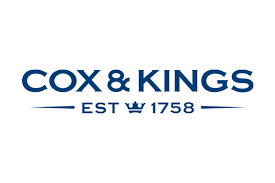Cox & Kings Enter into Bankruptcy

Introduction

Cox & Kings, one of the oldest travel companies in the world, faced a major financial crisis in 2019, culminating in bankruptcy and the subsequent appointment of insolvency practitioners. Established in 1758, Cox & Kings held a prestigious place in the travel industry. However, after defaulting on payments, the company was sent to a bankruptcy court in October 2019, marking a significant moment in the history of global tourism.
Background
Cox & Kings had a storied past. From its beginnings as an army agent in the 18th century, the company evolved into a multifaceted enterprise involved in publishing, shipping, banking, and, more recently, the sale of packaged holidays. Over the years, it became synonymous with luxury travel, catering to a global clientele.
However, its financial troubles became evident in 2019 when the company failed to meet its debt obligations. Cox & Kings’ issues came to the fore when it defaulted on payments, forcing it into bankruptcy proceedings in India.
The Indian Express reported that inquiries were sent to the lawyers representing Kerkar and Kapoor in Mumbai concerning the loans and defaults, but no response was provided. The absence of clarity only compounded the growing concerns among creditors and investors.
Insolvency Proceedings
Following the default in payments, Cox & Kings was placed into insolvency proceedings in October 2019. Hudson Weir was appointed as the insolvency practitioner, tasked with administering the process. Their role was to oversee the restructuring and liquidation process, aiming to recover funds for creditors and minimise the damage caused by the company’s collapse.
The legal and financial intricacies surrounding the bankruptcy were complicated by the company’s international footprint. The Indian arm of Cox & Kings faced significant challenges, and the lack of communication from its leadership raised further questions about how the situation had been allowed to deteriorate so rapidly.
Key Challenges
Several factors contributed to Cox & Kings’ downfall. A key issue was the company’s inability to service its mounting debt, which ultimately led to its default in 2019. The leadership team faced growing pressure as financial institutions, creditors, and stakeholders sought answers regarding the company’s financial management.
The global travel industry was also becoming increasingly competitive, with the rise of online travel platforms and budget operators squeezing margins for traditional travel companies like Cox & Kings. While the company had an established reputation, it struggled to adapt to the changing demands of modern travellers.
Aftermath
The bankruptcy of Cox & Kings was a significant event for the Indian travel sector, as the company had long been a leader in the market. The insolvency proceedings, led by Dharmesh Patel and Asher Miller, attempted to salvage what was left of the company. However, the lack of sufficient assets and the complexities of its operations meant that liquidation was the likely outcome.
Despite the company’s long history and strong brand recognition, the collapse of Cox & Kings serves as a reminder of the importance of prudent financial management and the risks associated with debt. In a fast-changing industry like travel, even established companies must be agile and financially robust to survive.
Conclusion
The appointment of insolvency practitioners Hudson Weir signalled the beginning of the end for the company. Despite efforts to manage the process, the company’s significant debt burden and leadership challenges meant that liquidation was inevitable.














